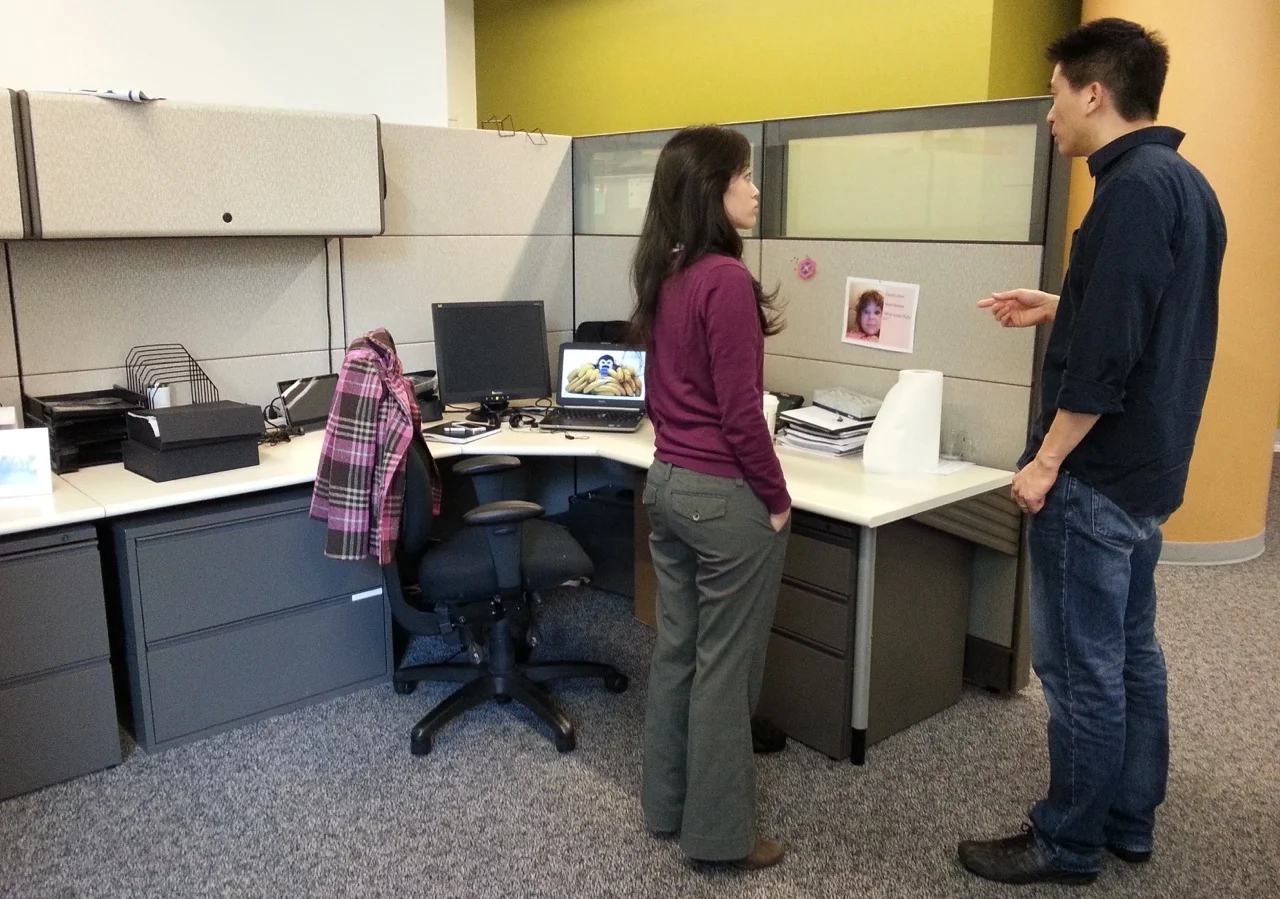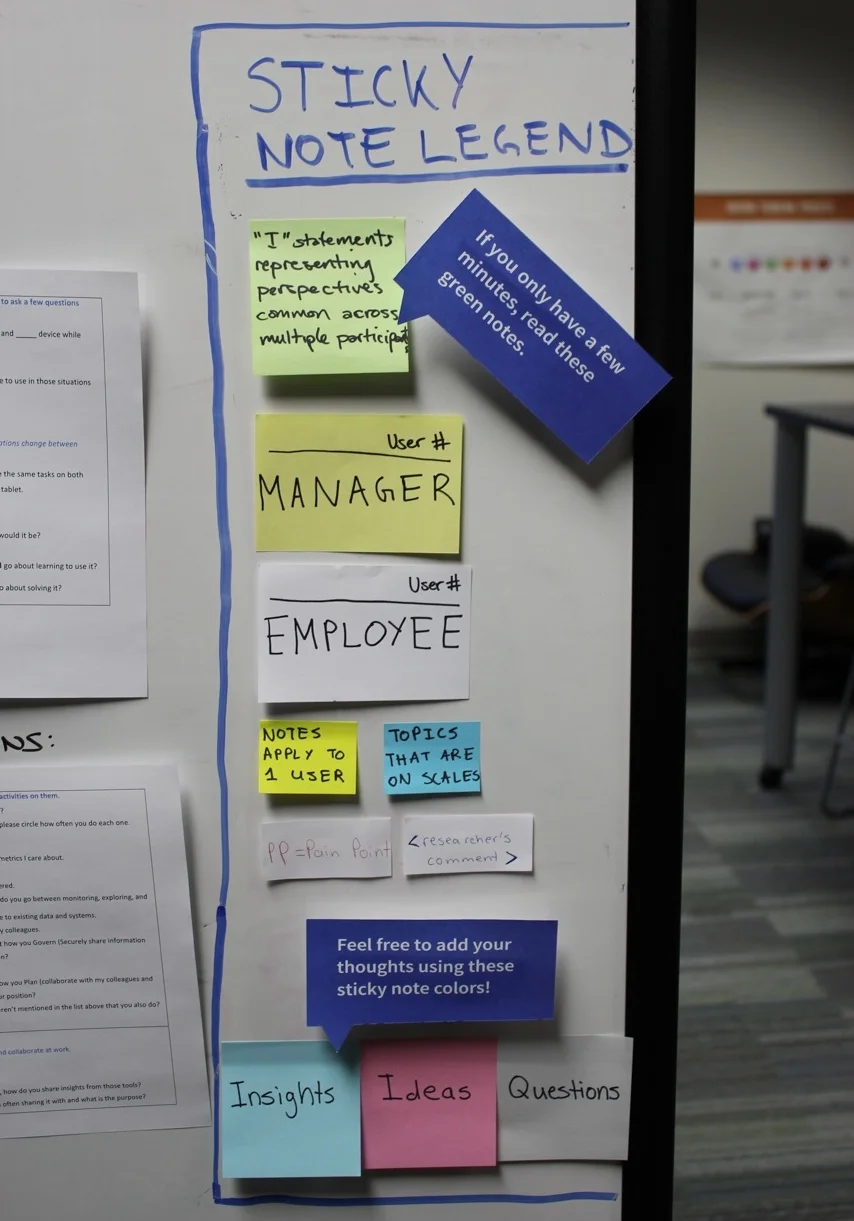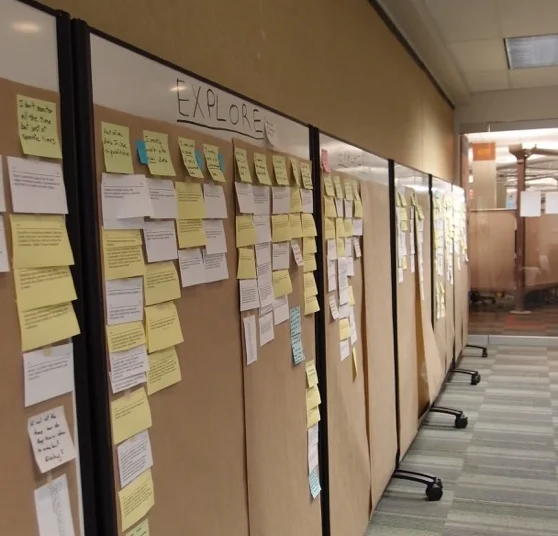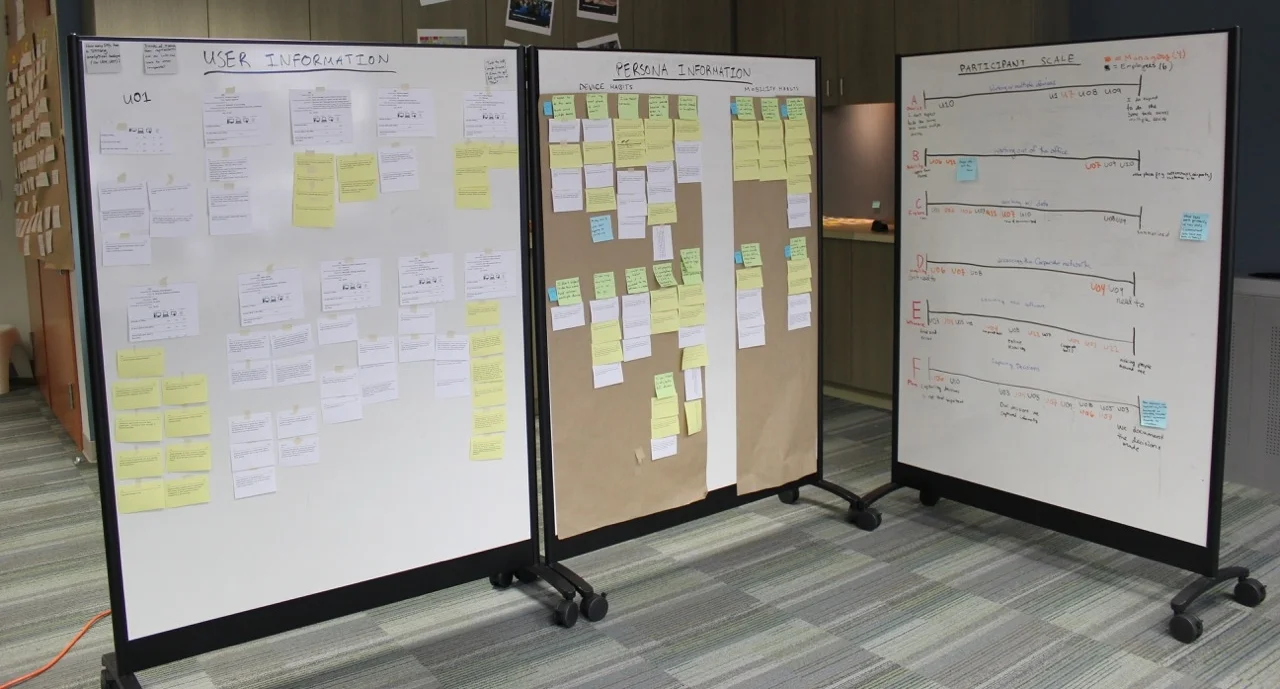GENERATING PERSONAS FOR ANALYTICS PRODUCTS
user research | interviews | affinity diagrams | communication of findings
(To comply with my non-disclosure agreement, confidential information has been omitted/obfuscated. The information here is my own and does not necessarily reflect the views of SAP.)
Problem
In 2014, the SAP analytics product development group were looking for personas to inform product strategy, UX design and software development.
Process
Two colleagues and I started a user research project to generate new personas, specifically ones that were based on direct communication with end users rather than on second-hand information from proxies (e.g., managers of end users, IT). We also aimed to identify actionable opportunities. We ran interviews to better understand our target end users (e.g., type of data used, how data was used to make decisions, device usage, typical day).
My role: I co-led the research planning, questionnaire design, data analysis (using affinity diagramming), sharing and discussing results with stakeholders, and presenting the final personas. I also took the lead on recruiting participants.
Research: Although our user research plan was relatively straightforward conceptually, we encountered a number of challenges that needed to be addressed.
- Alignment with stakeholders: User research had not previously had a significant place in the product development process. Our newly formed research team needed to continuously meet with stakeholders (e.g., UX, product strategy) to update them on progress, demonstrate value from the research work, and adapt to changing requirements.
- Recruiting: We did not have an existing pool of end users so we needed to recruit participants through our professional and personal networks. After much legwork, we recruited 25+ target end users from inside SAP and from SAP customers.
- Changing product focus: At the beginning of our project we were asked to focus on decision makers, but this focus later shifted to analysts. Fortunately, when we reached out to business users who used data to make business decisions, we also met with analysts and people who generated data analysis artifacts (e.g., reports, dashboards). Recruiting more broadly at the onset of the project allowed us to quickly adapt to product strategy changes.
Outcome
At the end of the project, we generated a set of three complementary personas, which we presented in person to the product development group. The product strategy team chose one persona to be the primary one and we produced posters (with visual design help from a UX colleague) for the development group summarizing the main insights on that persona. This persona continues to be used by the UX team and software development to inform UX/UI design decisions.
Project outcomes also included the identification of a number of feature-related opportunities that we presented to product managers, as well as a short questionnaire that could be used to profile users (e.g., in usability testing, further user research).





